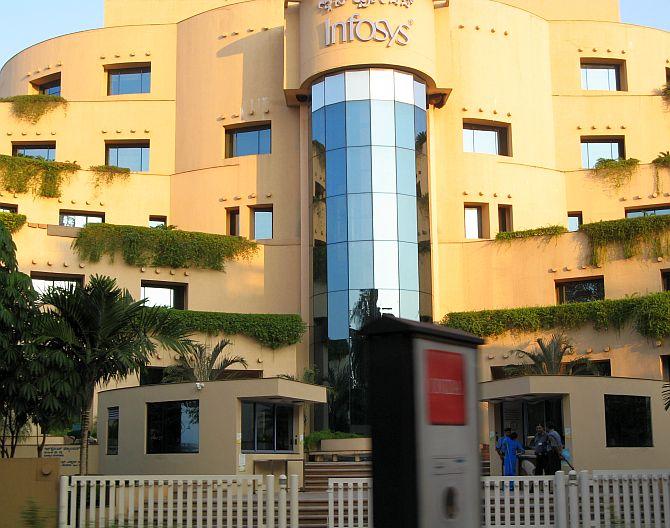Itika Sharma Punit & Bibhu Ranjan Mishra
Infosys’ CEO and Managing Director S D Shibulal, who has decided to retire ahead of his superannuation in March 2015, believes he is leaving behind a much healthier company than what it was when he took over in August 2011.
He talks to Itika Sharma Punit and Bibhu Ranjan Mishra about the challenges Infosys overcame under his leadership in the past two years and the firm’s prospects going forward.
Edited excerpts:
…
We are much stronger and younger today: Infosys CEO
Photographs: Reuters
Why did you decide to leave Infosys ahead of your superannuation?
The nominations committee has started search for the next CEO and they need to find a successor. So it is important for me to give clarity of my plans.
How does it feel to part with an organisation where you’ve spent about three decades?
I feel pretty good (laughs). I think today is not as tough a time for Infosys as it was when I took over.
Then, we were going through numerous internal and external challenges. We had a trailing revenue growth because of the external environment; we had clients facing challenges; we had to undertake transformation of strategy from 2.0 to 3.0; we did not have enough visas and we also had a couple of litigations in progress.
There was also the justice department’s investigation and regulatory challenges. Today, all of those are over.
The growth rate has doubled year-on-year; all the litigations and investigations have been settled; 3.0 strategy has been ingrained; we have not lost a single client, and the brand is intact.
New challenges will always be there, but when I look at things, we are much stronger and younger today.
…
We are much stronger and younger today: Infosys CEO
Image: S D Shibulal, CEO, InfosysPhotographs: Reuters
Can you share the high and low points of your career at Infosys? Also, what are your plans after retirement?
It has always been a high point for me at Infosys. I had a wonderful time.
I have not thought about what I would be doing after retirement. I have not taken that first action yet.
…
We are much stronger and younger today: Infosys CEO
Photographs: Roshan Rao/Creative Commons
Are you sure that by the time you leave Infosys (by January 9, 2015 or when a successor is found, whichever is earlier), it would be a healthy company?
Oh yes! Today, Infosys is much stronger than when I had taken charge. And I say this from several perspectives such as client confidence, regulatory perspective, and strategic direction perspective.
From a performance perspective, none of us are satisfied with our performance over the past two years. But the fact remains that we have doubled our growth rates.
…
We are much stronger and younger today: Infosys CEO
Photographs: Courtesy, Binoyjsdk/Wikimedia Commons
Do you think Infosys is getting back to industry-leading growth?
Over the past year and through this year, we have been able to bridge the gap vis-à-vis the industry from 10 per cent to some two or three per cent.
But the fact still remains that this year in Q4, we grew less, and so it is mathematically impossible to get a higher year-on-year growth rate in the following year since our entry point is low.
So this year, we have given a guidance of 7-9 per cent, while we are fully ready to take advantage of any new opportunities that we may get.
…
We are much stronger and younger today: Infosys CEO
Photographs: Reuters
But your peers are giving a much healthier revenue growth guidance. Where do you think Infosys went wrong?
I think each company has its own strategy. For example, we have a high exposure to hi-tech; so we got beaten there in Q4.
Similarly, we have high dependence in discretionary spending. So when that gets tightened up, it affects us more.
Each organisation has its own client portfolio. So our portfolio is our portfolio and our guidance is our guidance.
…
We are much stronger and younger today: Infosys CEO
Image: S D Shibulal, CEO, InfosysPhotographs: Reuters
Don’t you think if a certain strategy is not working for you, there is a need to change it?
We have changed it. But strategy takes five to seven years to come through.
Also, the chairman’s office has taken several steps for sales and delivery effectiveness, and things like that take two to three years to materialise.








article